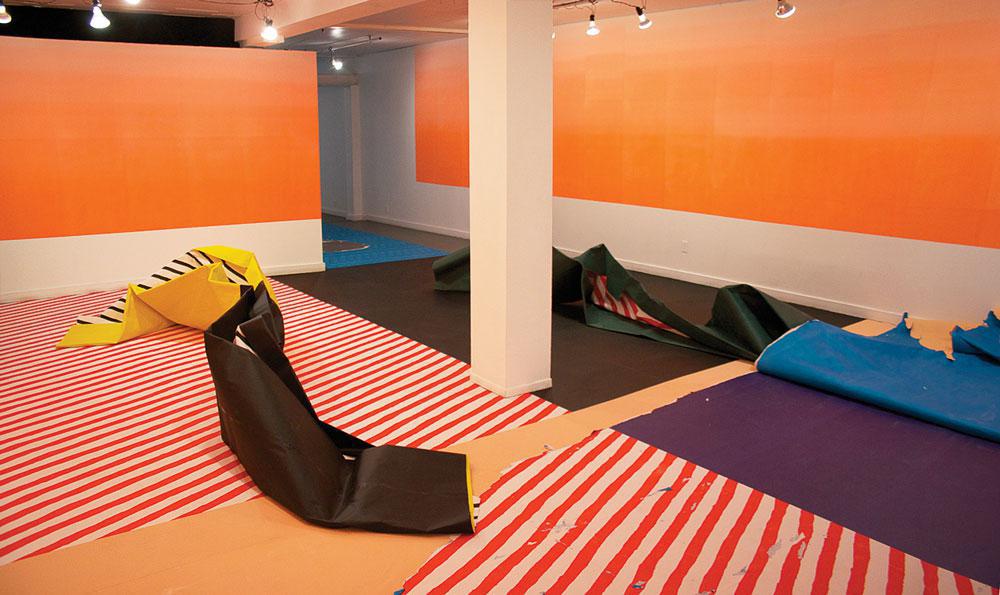Seripop (Yannick Desranleau and Chloe Lum) presented one of their most recent site-responsive, large-scale print installations at Struts Gallery, an artist-run centre located in Sackville, New Brunswick, titled Certainty: Two Times Not Really. As with previous incarnations of the project, the title of the exhibition is directly related to the process involved during the impromptu installation, of decision-making and trial and error. When asked about the title, Lum said that they saw each room as a separate work and that it dealt with the uncertainty of the process involved in making the “quasi-minimalist” forms. They had no idea if the forms would work or if they would remain stable. Other titles have included Looming at YYZ Artists’ Outlet, Toronto; Uncountable (Not Comparable) at L’Écart Lieu d’art Actuel, Rouyn-Noranda; and The Options That Are Offered To Us: The Least Likely / The Most Tolerable, at Truck, Calgary. Each installation is an experiment in creating tensions with abstracted visuals, where strong modernist tendencies are at play through the utilization of form and space.
Upon initial observation, the exhibition at Struts appeared conspicuous and unnerving. Large sheets of ink-soaked, screen-printed paper were plastered over considerable portions of the gallery. The rich colours, bright fluorescents and clashing patterns surrounded you as you first walked into the gallery and directly onto the art. In some areas the paper was applied in several layers, as evidenced by the artists’ decision to tear back a huge leaf of it in one spot, unearthing a large purple patch under peach-and-blue paper. Like wallpaper in a dilapidated building, the connection to history could be made through the visible layers. Yet in direct contradiction to this interpretation of age, there was absolutely nothing else about the installation that didn’t scream of its absolute newness (nowness?).
The show also featured several sculptural forms constructed out of the same paper used for the surfaces. The first room featured two long, rumpled forms lying on the floor, wrestled into their current configuration. In the second room, a large blue boulder was constructed from a print that had once been glued to the floor; it had been scraped off and was held in shape with yellow industrial rope.
With nothing displayed on plinths and no wall-hung works, there was really nothing particularly consumable about the exhibition. The artists’ disorienting fit to mutate the “white cube” with to-be-discarded materials pasted overtop of everything (including one light switch, I noticed) was reminiscent of street postering and, as a whole, the exhibition was decidedly punk in its non-conformist presentation.
This is a review from the Spring 2014 issue of Canadian Art. To read more from this issue, visit its table of contents. To read the entire issue, pick up a copy on newsstands or the App Store until June 14.









